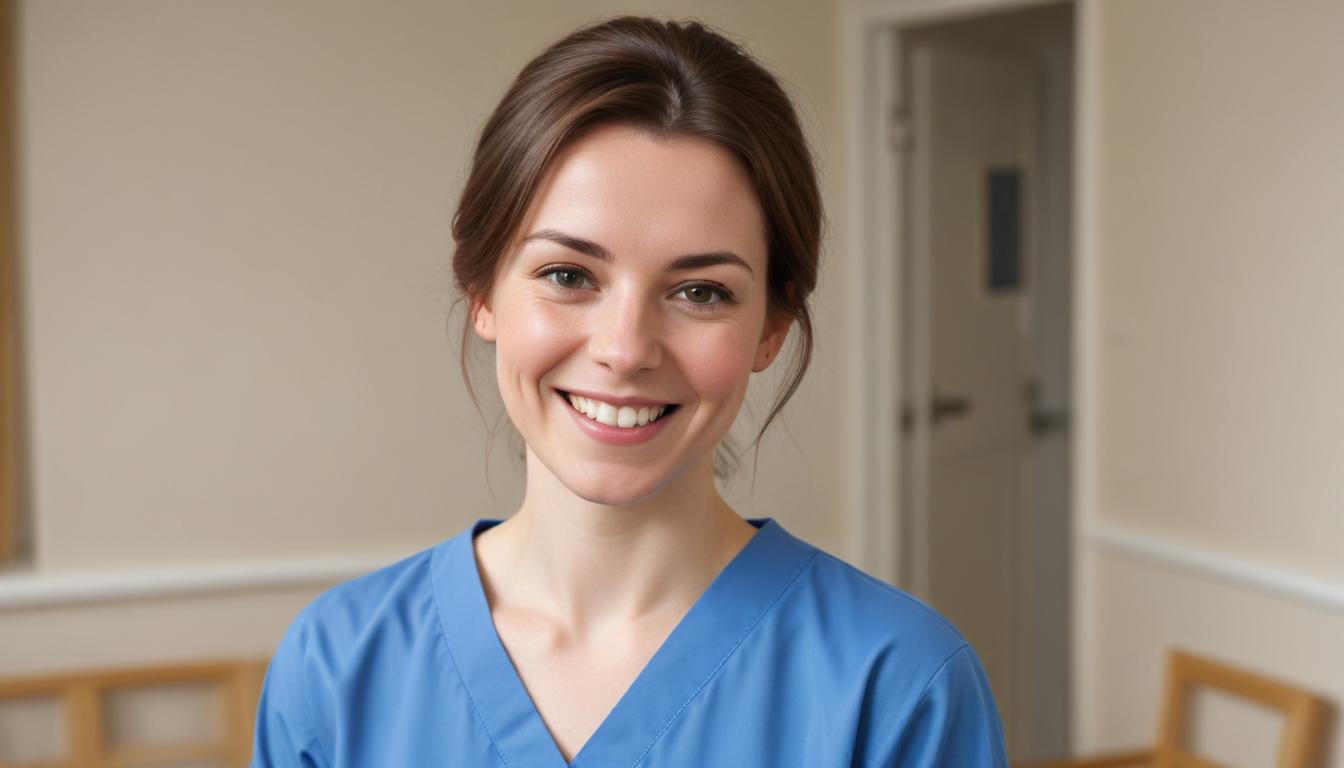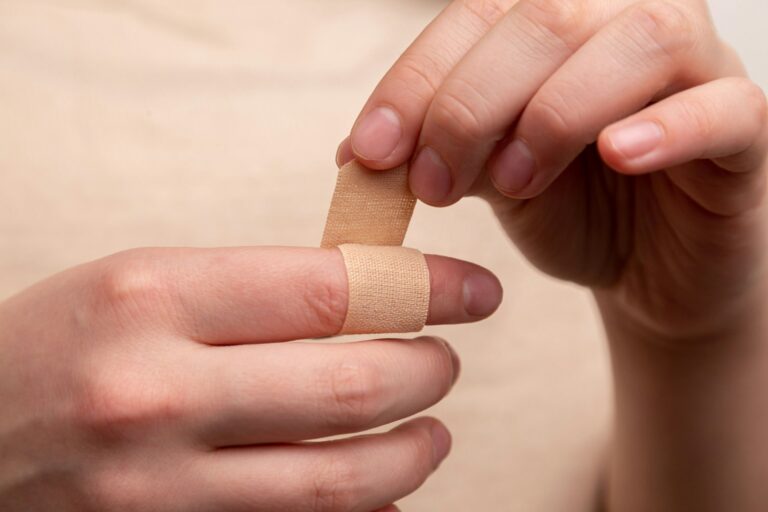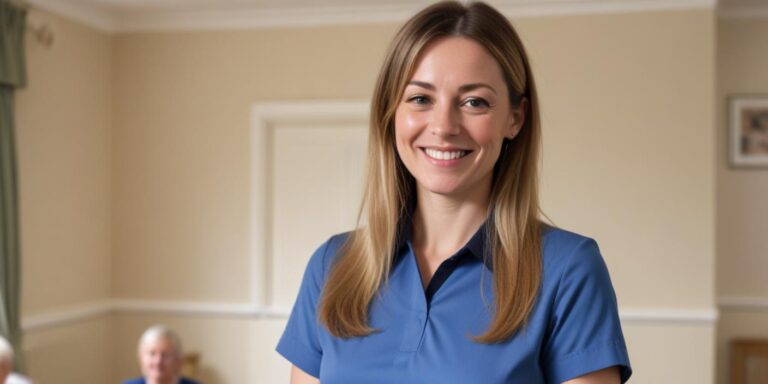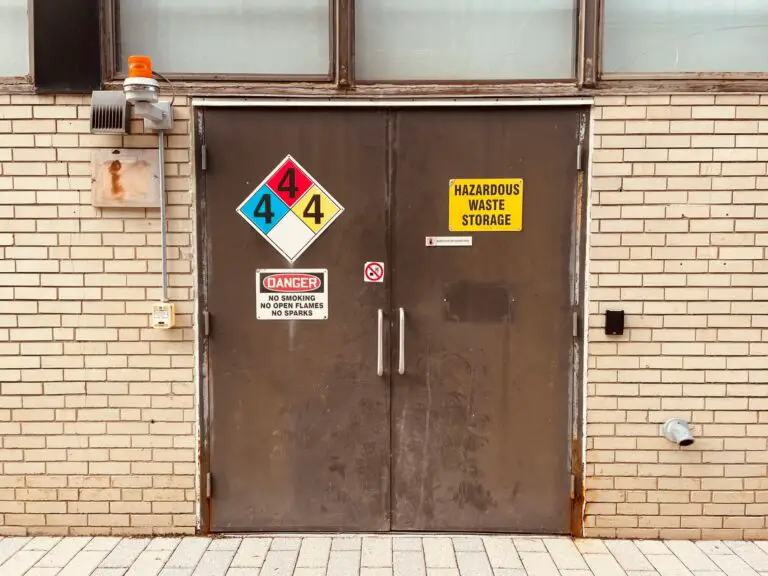
Slips, trips, and falls are some of the most common types of accidents in health and social care settings across the UK. Within care homes, hospitals, GP surgeries, clinics, and community environments, these incidents can have serious effects on service users, staff, and visitors. Although they sound similar, each term describes a slightly different accident. They affect everyone, but some people are more at risk than others. Health and social care providers take steps to reduce these accidents, but understanding them is the first step to preventing harm.
What is the Difference Between Slips, Trips, and Falls?
Slips
A slip happens when there is too little grip (traction) between a person’s foot and the floor. This often means someone’s foot slides unexpectedly, which can make them lose their balance.
Common causes of slips include:
- Wet, greasy, or polished floors
- Spills of liquid or food
- Loose mats and rugs
- Poor cleaning methods, leaving floors damp
- Unsuitable or worn-out footwear
Certain floor surfaces are more likely to become slippery from water or oils. In care environments, residents and patients may have difficulties with mobility, making them vulnerable if they encounter a slippery floor.
Trips
A trip happens when someone’s foot strikes an object or uneven surface, making them lose their balance and fall. A trip often has an immediate cause and is related to the environment.
Common causes of trips include:
- Cables or wires trailing across walkways
- Uneven flooring or steps
- Clutter and obstacles, such as equipment or bags left on the floor
- Torn or frayed carpets
- Poor lighting that makes hazards hard to spot
Trips can happen at any time but are more common in busy areas or where staff and residents are moving quickly or distracted.
Falls
A fall refers to a person coming down suddenly, often vertically, whether from a standing, sitting, or lying position. A fall is usually a result of a slip or trip, but it can occur without either. People may fall from beds, chairs, stairs, or even simple slips off the kerb.
Falls in care settings can cause:
- Bruises, cuts, and grazes
- Broken bones
- Head injuries
- Psychological distress, including fear of falling again
Older adults, people using walking aids, and those recovering from illness or surgery have a higher risk. Losing confidence after a fall can also limit independence and quality of life.
Why Slips, Trips, and Falls Happen in Health and Social Care Settings
Health and social care environments are busy, with a wide range of people using shared spaces with different abilities and needs. Unlike many workplaces, health and social care settings must cater for people who may be frail, unsteady on their feet, or using walking frames and wheelchairs.
Key reasons slips, trips, and falls happen in these settings:
- High numbers of people moving around at busy times
- Spills from drinks, water jugs, or personal care products
- Medical equipment and cables in corridors and treatment areas
- Sudden changes in flooring types (carpet to lino, for example)
- Low lighting, particularly in bedrooms or corridors at night
- Reduced mobility, poor eyesight, or confusion of some service users
People who are unwell or frail may find it harder to react quickly, making them more likely to lose their balance.
Who Is Most at Risk?
Anyone can slip, trip, or fall, but people in health and social care environments face particular risks. Older adults are at the greatest risk of serious injury from a fall. Their bones may be weaker (a condition known as osteoporosis), and they are more likely to have poor balance. Other risk groups include:
- People with poor vision
- Children who move quickly and don’t always pay attention
- People living with dementia or confusion
- Those on medication affecting balance or alertness
- Individuals with long-term mobility problems or pain
- Anyone using walking aids, sticks, or wheelchairs
In care settings, staff can also be at risk. Cleaning staff may work with wet floors. Nurses and care workers are often in a rush and may carry equipment, making slips and trips more likely.
The Effects and Consequences
Physical injuries from slips, trips, or falls can range from minor bruises to life-threatening fractures. Head injuries are especially worrying, particularly for older adults. But the effects aren’t only physical.
Consequences include:
- Pain and discomfort
- Loss of independence, needing more help day-to-day
- Hospital stays for operations, with all the risks of infection or further illness
- A long recovery, causing disruption to lives
- Fear of falling again, which can reduce confidence and lead to feelings of isolation
For health and social care providers, investigating and responding to incidents takes time and resources. Such accidents can affect morale, increase insurance claims, and lead to inspections by regulators like the Care Quality Commission (CQC).
Typical Hazards Found in Care Settings
To spot hazards, it helps to think of the different areas of a hospital, care home, or in-home environment.
Common hazards include:
- Spilt drinks, soup, or water on dining room floors
- Bath and shower water in bathrooms
- Cleaning products left on floors or not rinsed away
- Uneven outdoor paving slabs and steps
- Mats and rugs that do not lie flat
- Medication trolleys, bins, and laundry bags left in corridors
- Curtains, bed sheets, or clothing trailing onto the floor
Staff have a duty to keep spaces tidy, but it’s not always possible to remove every hazard. Quick reporting and prompt action are necessary to keep everyone as safe as possible.
How to Reduce the Risk of Slips, Trips, and Falls
Prevention is the best approach. Good practice in health and social care settings can make a real difference.
Measures include:
- Cleaning up spills straight away and placing warning signs on wet floors
- Making sure floors are kept dry and free from grease and clutter
- Fitting grab rails in bathrooms, corridors, and near steps
- Checking that mats and rugs have non-slip backing
- Arranging furniture so there is enough space to move safely
- Regularly checking for trip hazards such as loose wires or uneven floors
- Using bright, even lighting throughout buildings and outdoors
- Ensuring lifting aids and wheelchairs are properly maintained
Staff should also receive up-to-date training in fall prevention and risk reporting.
The Role of Risk Assessments
Risk assessments are formal checks carried out to predict where accidents might happen and to put controls in place. In health and social care, risk assessments look at:
- The environment (floors, lighting, steps, and furniture)
- The needs of individual service users
- Staffing levels and staff training
- The use of aids such as walking sticks or hoists
Individual risk assessments for residents and patients focus on personal risks, such as a history of previous falls, medication, and mobility problems.
Involving Service Users and Families
Service users are often the best source of information about how safe they feel. Involving them in conversations about keeping safe gives them control and helps build trust.
Tips for involving people:
- Ask for feedback about carpets, lighting, and furniture layouts
- Encourage people to report hazards or near misses
- Discuss footwear — slippers and shoes with a good grip help prevent slips
Families and carers can help by making sure glasses or hearing aids are worn, and by removing clutter from bedrooms and communal areas.
Staff Responsibilities
In all settings, staff play an important role in keeping everyone safe. This means more than just ticking boxes. Staff should:
- Stay alert to new hazards, such as spills or broken equipment
- Report hazards immediately to maintenance teams or supervisors
- Take care when moving furniture and equipment
- Supervise residents or patients who might be at high risk
- Note if someone’s mobility has changed and raise concerns
Cleaning staff, in particular, must follow safe systems so that floors aren’t left slippery.
Legal and Regulatory Requirements
Health and social care providers must follow UK law, including the Health and Safety at Work Act 1974. The Management of Health and Safety at Work Regulations (1999) say all employers must assess and manage the risk of slips, trips, and falls.
The Care Quality Commission (CQC) checks that providers are keeping people safe. Providers can be penalised if they neglect safety, especially if an accident could have been avoided. Everyone has a legal duty to look after themselves and others.
Accident Reporting and Investigation
When a slip, trip, or fall happens, staff should report this immediately, even if the injury seems minor. Good record keeping helps to spot patterns, such as repeated falls in the same place or for the same person. Investigating the cause helps prevent future accidents.
Standard reporting usually includes:
- Time and date of the incident
- Who was involved
- Where it happened
- What the hazards were
- How the accident was managed
- Action taken to prevent a repeat
Reports help managers see whether changes are needed to policies, staff training, or the environment.
Helpful Equipment and Technology
Modern technology can help in preventing falls. For example:
- Non-slip flooring and matting
- Walking aids, walking frames, and personal alarms
- Bed and chair sensors to alert staff if someone at risk is moving
- Grab rails and supports in toilets and bathrooms
- Bright, even lighting systems
Footwear checks and mobility assessments help staff choose the right items for each individual.
Raising Awareness and Building a Safety Culture
Everyone plays a part in preventing slips, trips, and falls. Awareness sessions, regular meetings, and good communication between staff make it easier to spot hazards quickly.
Ways to promote safety:
- Posters showing how to spot hazards and what action to take
- Staff training during induction and on an annual basis
- Including slips, trips, and falls in staff handover discussions
- Praise for staff who spot and report hazards
A positive safety culture is built over time, where everyone feels able to speak up. Listening to service users, families, and colleagues creates an atmosphere where safety comes first.
Final Thoughts
Slips, trips, and falls are common accidents in UK health and social care settings. A slip is usually caused by loss of traction, a trip by an obstacle, and a fall may result from either. Older adults and people with mobility or cognitive challenges face greater risks and more serious injuries.
Wet floors, clutter, cables, and poor lighting are the main hazards. Action to reduce risks includes good housekeeping, quick clean-ups, risk assessments, and regular staff training. Staff, service users, and families all have a part to play in keeping environments safe.
The law requires providers to manage risks and report incidents. Being aware of the causes, risks, and prevention strategies saves lives and helps everyone in care settings stay safe, independent, and confident.
Subscribe to Newsletter
Get the latest news and updates from Care Learning and be first to know about our free courses when they launch.






